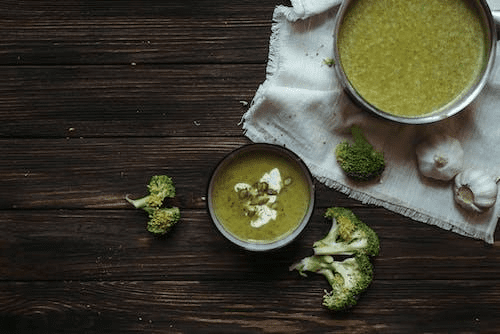Are you experiencing brain fog, abdominal pain, and bloating after eating? You might suffer from gluten sensitivity or celiac disease; it is time to change.
For people like you, a gluten-free diet could solve such problems. This diet has been shown to relieve signs and symptoms in people battling celiac disease and gluten sensitivity.
However, when you’re first trying out, you would find it overwhelming to switch to a lifestyle free of gluten, given the heavy presence of gluten in many common foods.
But worry not! Here, you will get all the necessary information to switch to a gluten-free diet and lifestyle. From using soy as a substitute for gluten, and finding gluten-free alternatives to analyzing food labels, keep reading to learn more.
Using Soy as a Substitute for Gluten
Soy is an excellent substitute for gluten, especially when you have Celiac Disorder or gluten sensitivities. It can take on the texture and flavor of gluten-containing products, making it a splendid alternative in baked goods, sauces, snacks, and other recipes.
Here’s why you need to consider soy protein:
- Primarily soy-based substitutes have more nutrients than wheat flour alternatives. They are a super supply of protein, high in fiber, and low in fat. Moreover, soybeans are high in vitamins, minerals, and antioxidants.
- Soy is a heart-friendly food: It can help decrease cholesterol levels and improve hypertension.
- Consuming soy products can assist in lessening inflammation helping prevent chronic illnesses like arthritis and type 2 diabetes mellitus.
- Soy can potentially lower the danger of certain cancers: Studies have proven that soy can assist in reducing the risk of breast cancers.
- You can use the following products as gluten substitutes to reap the benefits of soy nutrition:
- Edamame is an excellent snack free of gluten and high in protein, fiber, and antioxidants. These soybeans are commonly served as a snack in Japanese restaurants, but you can also enjoy them at home. Moreover, you can find frozen edamame in many grocery stores.
- Tofu, famous among vegetarians and vegans, is an outstanding alternative for gluten-containing components in recipes. It absorbs flavors properly, is high in protein, and is a great way to get your daily dose of calcium and iron.
- If you’re following a gluten-free diet, soy milk is an excellent substitute for cow’s milk. There’s a lot of protein, not much fat, and no cholesterol. Moreover, it is fortified with calcium, vitamin D, and vitamin B12, making it a healthy addition to your meal plan.

However, you might be allergic to soy or decide not to overeat it for reasons such as GMOs or its potential hormone-mimicking characteristics.
Therefore, as with every ingredient swap or dietary adjustment, moderation is fundamental when using soy alternatively for gluten. Also, seek advice from your medical doctor if having any issues with nutritional regulations.
You Should Find Gluten-free Alternatives for Common Foods
When transitioning to life without gluten, you might find it hard to obtain gluten-free alternatives for familiar foods. Luckily, with such products becoming more mainstream, it is now easier than ever to locate substitutes for your favorite staples.
Here are a few gluten-free foods you might want to try:
- Grains: Quinoa, rice, corn, and millet are gluten-free grains that you may use instead of gluten-containing ones such as wheat and barley.
- Flours: Almond flour, coconut flour, and rice flour are gluten-free options you can choose from to replace wheat flour.
- Bread: You can find gluten-free bread in many grocery stores or make your own using gluten-free flour.
- Pasta: Rice noodles, corn pasta, and quinoa pasta are all gluten-free options for you to enjoy instead of wheat pasta.
- If you are in for snacks, nuts, and fruits are secure bets, or you can try quinoa chips.

A Crucial Step: Checking Food Lists and Labels
Reading product labels and ingredient lists carefully is an important step toward adopting a gluten-free lifestyle that you must not miss. You would be surprised to find gluten in unexpected products like soy sauce, pasta, and processed meals.
The law demands that manufacturers list the 8 most common allergens you should look out for, including wheat, on food labels. However, it is essential to read the whole label to ensure that a product does not include any hidden sources of gluten.

Conclusion
Adopting a lifestyle free of gluten is a tremendous step that requires your dedication, as it may lead to extensive health advantages.
As more people become aware of celiac disease and gluten sensitivity, you can quickly obtain gluten-free options to traditional wheat-based foods. You might want to consider soy products; they may be an incredible alternative to gluten-containing ingredients while giving you essential nutrients.
Moreover, you will find it rewarding and healthful to switch to a gluten-free way of living with the right know-how. You should always study food labels cautiously, experiment with new grains and flours free of gluten, and discuss with a healthcare professional when you have any worries regarding dietary regulations.
Help keep news FREE for our readers
Supporting your local community newspaper/online news outlet is crucial now more than ever. If you believe in independent journalism, then consider making a valuable contribution by making a one-time or monthly donation. We operate in rural areas where providing unbiased news can be challenging. Read More About Supporting The West Wales Chronicle























